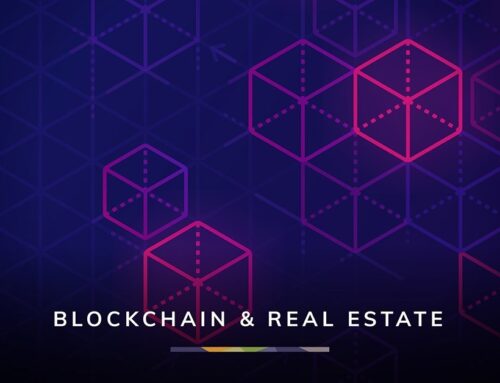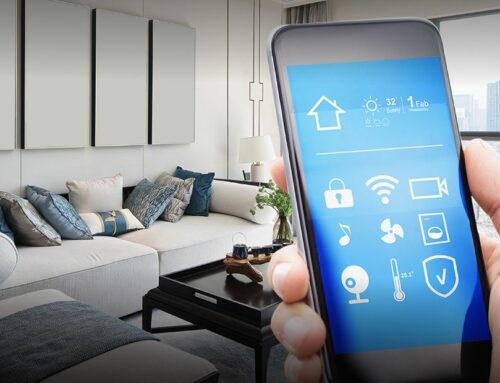
The Future Is Virtual
The mind challenges technology and technology has come to channelize our minds. Advanced technologies like virtual reality, artificial intelligence, and machine learning are bringing together the two worlds of humans and machines together. In this blog post, we’re going to explore the next generation of technologies like VR, AR and LiDAR.
Virtual Reality has increased its presence in several sectors due to its ability to create a better experience, interaction, and stronger recall values with customers. According to Tech Jury, the global VR market is set to be a $209.2 billion industry by the end of 2022.
The Two Realities
Virtual Reality is the projection of a user interface in 3 dimensions. It’s an immersive 360 degrees experience allowing one to be mentally and visually gripping. With the means of VR technology, you’re able to interact with, listen to, observe and experience things as close to reality without physically feeling them.
The term Virtual reality is commonly confused with Augmented reality (AR). AR is an enhanced form of the physical world that is obtained by the application of digital visual elements and sensory stimuli delivered through technology. AR includes overlaying optical, auditive, and other sensory information onto the physical being in an attempt to strengthen one’s experience.
AR inhabits the existing real-world surroundings and infuses virtual intelligence. Whereas, VR creates a disparate virtual environment and allows its viewers to inhabit it.
In the world today, one of the key aspects of augmented reality is to identify distinct virtues of the physical world, understand them and determine comprehensive insights that are available for real-time applications.
Taking a Tour Around
A virtual tour is an experience created with the use of semi-immersive virtual reality technology. This technology allows you to experience a particular location remotely as though you’re physically present in it.
Apart from the gaming industry, the businesses employing this technology to the max are:
- Architecture and Real Estate– VR makes it possible for architects to not just see how their design will come out but how it would feel. Home-owners can experience the architecture right from the planning stage and make real-time changes according to their suitability making the process sustainable for both ends.
- Tourism and Hospitality– Since 2015, when Thomas Cook launched ‘Try Before You Fly‘ VR experience where travelers could visit countries to have a virtual experience of their holidays before booking it, the VR technology has come a long way in 2021 where individual hotels and restaurants are increasingly trying to offer a virtual tour to let one choose the best options for them.
- Education – Incorporating VR into the education system enables students to learn experientially. VR classrooms let students engage in lectures around the world in an immersive environment. With COVID-19 coming into the picture, virtual conferences and ceremonies are the new normal.
- Recreation -Be it watching a theatrical drama or visiting a museum or a theme park across continents or immersing in a meditative space, all have become possible within the comfort of your home with VR.
Here are some advantages of incorporating Virtual Tours into your enterprise:
- Better Visuals, Better Prospects:
The realistic and clear visuals of space provide the customer with precise details that lead them to make informed decisions. Multi-angle views can create a near-perfect visual and are as close to reality as it gets. This increases the sale prospect.
- Competitive Advantage:
Virtual tours are a relatively new feature and retain the curiosity angle to entice the customers. It has the advantage of creating a sense of trust and reliability in the minds of your buyers against those who do not have the structure.
- Avoids In-Person Viewing:
Giving tours in person requires a huge amount of time spent both by the agent and the customer. A virtual tour provides viewers with the ability to explore the internal space as well as its surrounding location. Calls to visiting will come from customers that are already interested and satisfied.
Tools To Create a Seamless Virtual Tour:
Matterport
It’s ideal for work planning, documenting projects, listing and appraisals of properties and so on. Matterport is available for use on both android and iOS and allows you to capture 3D scans of space to leverage your business. From driving in rentals to selling homes, from e-commerce to building an interior profile, it covers all spatial services.
Click here to learn more.
WPVR
WordPress is a preferred software due to the provider’s easy interface and reliable output. Once you have well-shot 360 panoramic images, you can create a custom virtual experience with any professional software.
Click here for a guide to create a virtual tour using WPVR assistance.
Leading into the Light
Talking about technologies, we come to one of the most profound ones at our disposal, LiDAR. Lidar (light detection and ranging) is a remote sensing technique employed to measure the distance of elements on the earth’s surface. LiDAR has been adapted even into mobile phones both iOS and android and uses a pulsed laser to measure the distance of an object from the surface of the earth. LiDAR maps give positional certainty in terms of both absolute and contingent, allowing the receivers to know the point of data collection and its distance to the objects in question.
Many applications benefit from using LiDAR. From the floor mapping to the gaming industry, LiDAR has not ceased to expand its use cases.
Following are a few popular uses of LiDAR technology.
- Environment:
Laser scanning is a famous technique used to map flood risks, carbon stocks in forestry, and supervise the rate of coastal erosion.
- Automotive:
Low-range LiDAR scanners render support in navigating autonomous vehicles. In Formula 1 races, simulations based on 3D models provide the racers with an edge before setting foot on the tracks.
- Space Travel:
NASA has identified LiDAR data as a key element in enabling them to land shuttles safely on the Moon.
- Real Estate and Architecture:
LiDAR technology helps generate 3D models for the conditional monitoring of structures, and Revit models for architects and structural engineers. It tracks building projects and produces digital twins for BIM (Building Information Modeling) applications.
The lidar scanning methods are used to depict structures and interiors digitally in explicit detail in a cost and time-effective manner.
Swishing The Magic Wands
In today’s time, we are not changing the world with technology but technology is changing the world we live in. It may not replace great architects of society but technology in the hands of great architects will be transformational. With all these tricks up your sleeves, you are out there to create magic. Because “it’s still magic even when you know how it’s done”.
The future is ours to create.






Hi Dear,
I am a SEO Consultant with more than 10 years of online marketing experience. I am always on time and while I am often quick at my work I always deliver quality work.
I am a blogger outreach service provider. If you are looking to get published on high authority blogs with a backlink to your website to add more Search Engine value to your website, then we will create a great opportunity for you. I will write and publish a post there with a dofollow / nofollow backlink to your website, using your anchor text.Just one backlink will change the whole picture of the marketing campaign.